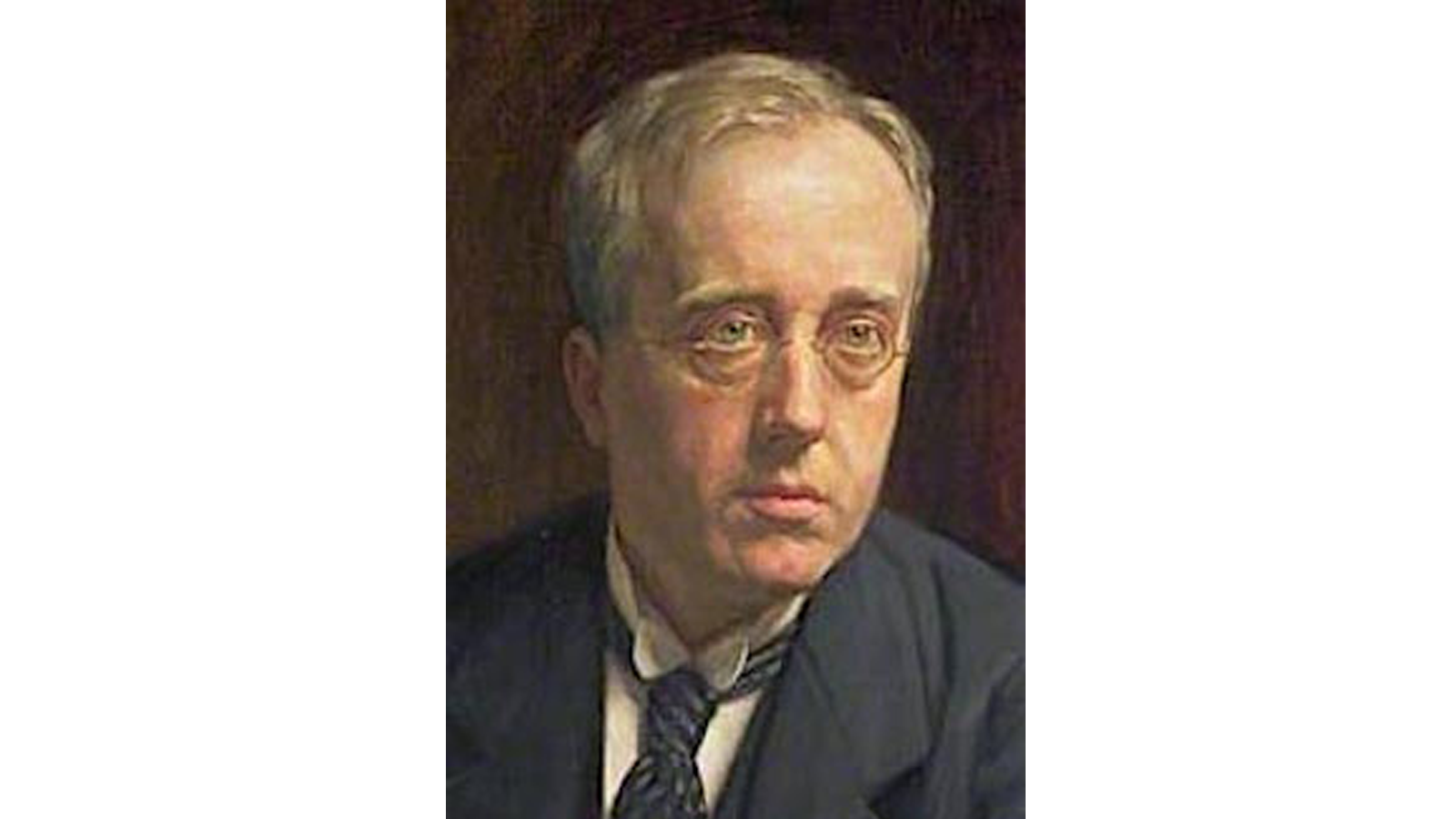
No. 9
Holst: The Planets

Gustav Holst was a shy man, diffident and understated yet with a questing heart and ear. His parents were both musicians and he was bent on becoming a pianist. That was not to be; Holst developed neuritis in his arm. He said his arm felt “like a jelly overcharged with electricity”. His health had never been strong; even as a boy he suffered from asthma. For a while as a lad Holst even took up the trombone which he thought would help him conquer his asthma. It didn’t. But he persisted. But the only meaningful way Holst wanted to be a musician was to compose. In fact he started composing when he was twelve. His parents actively discouraged him because while he could make a living as a musician, he really couldn’t as a serious composer. Even Sir Arthur Sullivan made his living in the theatre and by writing parlor songs.
The seventeen year old Holst was appointed organist and Choir Master at Wyck Rissington, Gloucestershire. There he even managed to write an operetta, hoping it might prove worthy of a London production. He was disappointed. Still Holst quietly persisted in his desire to write serious music. He sought a scholarship to the Royal College of Music; he missed it. Samuel Coleridge Taylor got the scholarship instead. His father finally gave in and borrowed one hundred pounds so that Holst could enter the College of Music on his own. While there he did manage to secure a scholarship which helped, but he spent a good deal of time in the orchestra pits of London Theatres playing the trombone to earn living expenses. And although he revered his teachers including Charles Villiers Stanford, his affection for his fellow students meant that he formed long lasting friendships with most of them. His best friend became the hulking, mop haired Ralph Vaughan Williams. Neither could write a note without immediately sharing it with the other. That friendship would be most important relationship of their lives made even more precious by the death of so many of their classmates in WWI.
It was Holst’s gift for friendship that made “The Planets” possible. After graduating from The RCM, Holst got a job teaching at St. Paul’s Girls School in Hammersmith. He was there for most of his professional life. Then, when the composer was 39 years old, during the vacation in 1913, Holst spent two weeks on Maijorca with among others Clifford Bax, who was an avid amateur astrologer. There he introduced Holst to the basics of astrology and taught him how to cast horoscopes. Holst was fascinated by the role the planets played in the horoscopes. He read Alan Leo’s “How to Read a Horoscope” from which he drew his astrological descriptions of the planets. Holst was caught up with the idea illustrating the astrological properties of each of the planets musically. He worked on the idea as the world was engulfed in WWI. First Holst cast the work as a suite for piano four hands , all except “Neptune”. He thought that planet’s aura of mystery required a much less percussive sound than piano, so he scored it for organ instead. His friend Adrian Boult, a conductor, immediately pointed out that getting an organ in the same room as a piano would be difficult. He suggested that the work should be heard as a whole and the way to promote its unity was to orchestra it and to arrange the separate “planets” as an orchestral work of seven movements. It took Holst the duration of the war to finish “The Planets”. Adrian Boult was surprised to on a day in September 1918 a note from Holst. It read, “Adrian, the YMCA are sending me to Salonika quite soon [to entertain the troops waiting to be mustered out and sent home] and Balfour Gardiner, bless his heart, has given me a parting present consisting of the Queen's Hall, full of the Queen's Hall Orchestra for the whole of a Sunday morning. So we're going to do The Planets, and you've got to conduct.” And so “The Planets” was launched. It was strange enough that it took a while to take hold. Yet by 1922 it had become enormously popular and influential, well on its way to becoming one of the most popular and important works written in the 20th Century.
Top 40 Countdown
A few years ago the listeners to WNED Classical told us what they thought a TOP 40 list of Classical pieces should be. Six hundred and twenty-two different pieces were put forward, and over nine hundred listeners participated. The result, The WNED Classical Top 40, was both startling and comforting. There were a number of surprises, Stravinsky and Copland made the list; Mendelssohn and Schumann did not! It was comforting to know that the two most popular composers were Beethoven and J.S. Bach. The biggest surprise of all was the piece that crowned the list as No. 1.